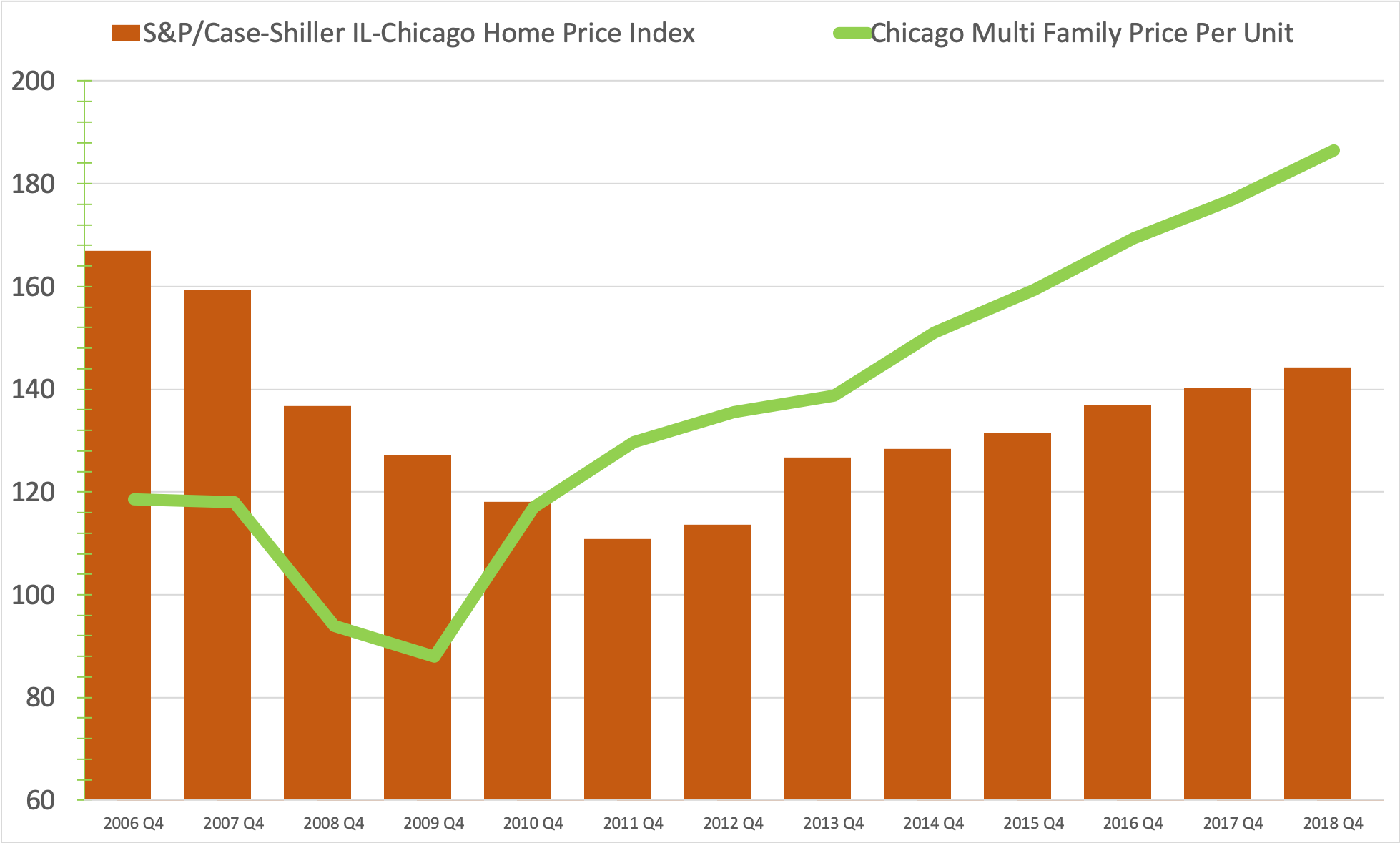11.25.19
Why I switched from being a prolific single-family rental portfolio owner to brokering multifamily

Most people know me as a guy that built, managed, and sold a portfolio comprised of hundreds of single-family homes. That’s true, and my experience over the last 14 years is a little more complicated than just “flipping” and renting houses. From acquisitions, development, leasing, market analysis, raising capital, portfolio optimization, property management, and disposition of both multifamily and single-family rental portfolios, I saw there was a better opportunity out there. Today, my entire focus is helping clients leverage my experience as an owner-operator, by advising and brokering the sale of their multifamily investments. So, why did I make this shift? Between economies of scale and the expertise I acquired from single-family rental operations, I believe apartment investment sales is a better opportunity. Here’s why:
Multifamily investments perform in all economies unlike single-family home investments
Simply put, multifamily apartment buildings are valued primarily on returns (cap rates) and demographics. Single-family homes, even those within an SFR portfolio, are subject to valuation factors outside the control of the operator and investor. These factors include homeowner psychology during a recession and property taxes.
During a recession, homeowners are reluctant to move during economic uncertainty. The adage “people have to live somewhere” is true; however, the “somewhere” homeowners typically choose to live in, is the house they are already in. This results in lower demand and lower sales prices and values. Let’s look at the most recent recession. From peak home values in 2006, when the S&P/Case-Shiller IL-Chicago Home Price Index was $167,000, values of SFR assets dropped 33% to $130,000 by the end of 2011. During the same period (2006 to 2011), multifamily price-per-unit grew by 11% from $119,000 to $130,000, effective rents grew by 9%, and cap rates were nearly flat moving from 6.7% to 6.8%. Through 2018 single-family home values were still down -13% from 2006 levels. On the other hand, multifamily price-per-unit increased by 60% from $119,000 to $186,000, effective rents grew by 20%, and average sales cap rates improved 7.5% from 6.7% to 6.2%.

Source: S&P/Case-Shiller IL-Chicago Home Price Index (CHXRSA) & CoStar
Granted, property taxes are a major factor in the value of a multifamily investment, but scale allows taxes to be absorbed and priced across the asset. Increasing property taxes has more of a direct impact on the homeowner’s monthly household payment. A 24% property tax increase can turn an SFR tax bill from $5,000 to $6,200 per year, resulting in a monthly increase of $100 to the tenant. Contrast that with a 48-unit building absorbing the same 24% increase ($40,000 to $49,600 per year.) Each apartment tenant will only pay $17 more for rent. That increase isn’t going to push someone to consider living somewhere else. However, a $100 per month increase in rents for SFR could push a renter to find another option. The SFR tax increase can also lower the sale price of the property, given many single-family home buyers purchase based on the total monthly payment amount.
Multifamily investing is more scalable than single-family rentals
If someone owns 48 apartment units in one site/building, the cost of management is considerably less than if they own 48 single-family rentals spread across multiple locations.
The only service providers that make the cost of managing multi-site SFR scalable focus on institutional funds with over 1,000+ homes. When you own 48 SFR properties, that means amplified maintenance and repairs spread across 48 different locations. Multifamily investors enjoy shared infrastructure and single-site management with their investments.
I was born and raised on the southwest side of Chicago and have owned and managed hundreds of SFR and multi-family units throughout the suburbs of Chicago. My in-depth experience with both asset classes, and demographics on a town by town basis, provides a unique perspective for my clients. Perspective that directly translates to sound advisory with asset valuation, operations, dispositions, and management and turn costs. Regarding SFR and multifamily assets in Chicago or the suburbs and across the country, multifamily investing is a better business opportunity.
